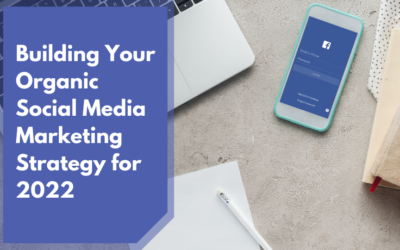As a marketing executive of higher learning institutions, you are all too aware of the challenges the digital marketing industry is currently facing. A recent study showed that there had been a significant slump in colleges and universities enrollment for the past eight years. The study projected that if things remain constant, there will be no reprieve until well after 2023.
The main reason for such a severe decline in higher ed admissions is the upsurge of many educational institutions cropping up and saturating the market. This means that many education providers must develop new strategies to manage the competition. That is where social media marketing comes in. Not only is it a low-cost avenue for such a plan, but it also has the potential to return on investment (ROI).
Role of Social Media in Digital Marketing
In these digital times, where anything can be done online, social platforms take up much of our internet time and use, especially with young people. It has great marketing potential and is an excellent resource for education providers keen on improving student enrollments.
That said, using social platforms has its set of challenges, which eventually must be floored to discover its full potential. Many institutions have already found that many prospective students -who form the largest number of social tools users – have the same interests when choosing an ideal school.
Aspiring students want a school with an appealing reputation, solid academics, and a memorable experience. Knowing this, most institutions are promising what they believe the students want in their lead generation ads. This presents yet another challenge on how to stand out.
The thing with social platforms is that users are looking for a connection. Students are keener on an institution that is connected to their community or similar relations. Institution marketers must include ways to make an institution relatable.
Using Facebook For Marketing
As Facebook continues to be the dominant social platform, Generation Z, which forms a big part of its user base, uses it as a formal and informal resource. It is not surprising then that almost every college or university has a presence on the platform. The catch is to maximize the platform’s marketing potential to:
- Reach out to prospective college-bound students.
- Organize events and programs for students, alumni, and the youth in general.
- Raise brand awareness through brand awareness.
Facebook offers exceptional options that are instrumental in advertising. These can be incorporated into a unique marketing strategy. These options include ad targeting based on:
1. Location- A zip code can be useful when targeting students from a given location
2. Behavior or life events: Target high school leavers or undergraduates
3. Interests: Find out what the students are looking for in their prospective school.
Check out what the competitors are offering and create a campaign based on what students are interested in.
4. Demographics: Research and understand the demographics involved. Target household income, family status, and education status.
From the above, you can upgrade to a “Custom Audience” where you can target aspiring students who are following or have interacted with your online platform.
Best Practices for Social Networks Marketing
Below are some of the best practices you should incorporate into your marketing strategy for positive outcomes.
1. Mobilize and improve your interaction with your students
Every year, a fundraiser dubbed “Giving Day” is hosted by Columbia University, bringing together everyone from Colombia to inspire students, researchers, and faculty.
To effect the mobilization process, they use social platforms, engaged social ambassadors, and alumni. They broadcast live footage, which is streamed to their large fanbase on different social platforms.
The one-day fundraising event has been influential in the University’s approach to social network marketing. In 2017, it raised over $15.6 million, including gifts worth $15.88 million. Later, the University took to social platforms to express its appreciation, targeting an audience in over 50 countries.
Paid advertising and Facebook’s sponsored posts also work well in targeting specific groups within your audience. If you are working with a limited budget, niche groups work just as great. You can create such groups and target prospective students based on age, location, interest, or demographics.
2. Raise Brand Awareness
Aspiring students often research prospective institutions using social platforms. Education providers can identify such students and reach out to them before they settle on any particular school.
The University of British Columbia has wonderfully used this strategy. Their innovations in sciences have been featured on Twitter, showcasing its faculty and students’ accomplishments and establishing its position as the lead player in such fields.
Incorporating the best marketing strategies in at least two platforms can give you the necessary online presence to create a vibrant brand that people can easily relate to and make the option for enrollment possible.
3. Drive up Admission Numbers
As the internet continues to take center stage in the contemporary world, the idea of online learning continues to grow more appealing to many college-bound students. This puts pressure on higher learning institutions to integrate online learning into their traditional learning program. While this is not a viable option for many institutions, it can significantly improve enrolment numbers if implemented.
Meanwhile, promoting your institution’s curriculum, culture, school faculty, available scholarships on social platforms, as did the University of New South Wales in Australia, can be most effective. It can prompt many undecided college-bound students to take action.
Social platforms are an excellent resource for different types of marketing. For instance:
LinkedIn and Facebook: These platforms are Ideal for professional networking between students and alumni.
Flashboards and Pinterest: Perfect for building a brand image.
Snapchat and Instagram: Great marketing resource sites for short video content.
YouTube channel: Helps build a broad fan base of dedicated followers.
Lead Ads: This a new feature on Facebook. Lead ads work by leading users to a popup requesting contact details instead of directing them to a landing page. Once the user provides the required contact information, the advertiser can download it directly from Facebook and hand it to admissions.
Alternatively, the marketer can incorporate their CRM into their account for ease of response. This strategy was successfully carried out by the University of California, Irvine. Several lead generation campaigns later, the University went recorded significant student enrollment.
Other Facebook features, such as Facebook ads and Instagram Reels, a combination of short video clips, high-quality photos, and powerful captions, are another resource that education providers can use ineffective marketing.
Conclusion
Given the current trend, the competition in the market may be here to stay. The issue is how to develop the best approach to counter the challenges and remain in the industry. Social media marketing could be all you need for your brand to stand out and drive up admissions. Developing a unique strategy that fits your budget can be a perfect return on investment ( ROI). DirectiveGroup is here to help you.






